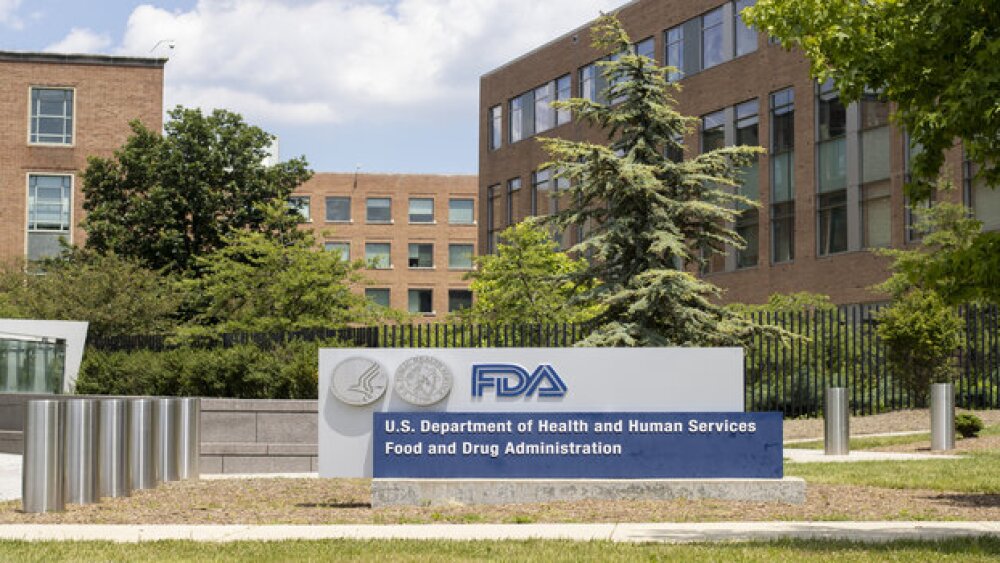Heidelberg-based Precisis GmbH has received Breakthrough Device Designation from the U.S. Food and Drug Administration (FDA) for its EASEE brain stimulator. FDA’s breakthrough devices program classifies medical devices that have the potential to enable more effective treatment of life-threatening or irreversibly debilitating diseases or conditions.
HEIDELBERG, GERMANY / ACCESSWIRE / February 22, 2022 / Heidelberg-based Precisis GmbH has received Breakthrough Device Designation from the U.S. Food and Drug Administration (FDA) for its EASEE brain stimulator. FDA’s breakthrough devices program classifies medical devices that have the potential to enable more effective treatment of life-threatening or irreversibly debilitating diseases or conditions. The goal is to make them available to patients faster.
Precisis is a medical device company developing minimally invasive neurostimulation methods to free epilepsy patients from their seizures. With EASEE, electrodes are invisibly positioned underneath the scalp - directly on the skull bone, but outside the sensitive brain tissue. The electrodes deliver calming current to the diseased brain area in a precisely targeted and individually adapted manner. So far, the only neurostimulation or surgical therapies available for patients with focal epilepsy require complex interventions: Either a stimulation electrode is placed around the so-called vagus nerve in the neck area, or anchored deep in the brain for deep brain stimulation - or physicians surgically remove the affected brain areas.
EASEE, on the other hand, is not only minimally invasive, but the product also allows treatment to be customized to each patient. EASEE relies on anatomical precision and takes into account the specific disease history of each patient.
“We are very pleased with the success of the multi-center studies. One in three patients does not respond to the available drug therapy options. We are in need of new, innovative treatment options such as EASEE, which represent a real alternative for patients and only entail a low risk”, said Prof. Dr. Schulze-Bonhage from the University of Freiburg, Germany, who is responsible for the clinical studies.
Prof. Dr. Andrew Cole, Director of the Massachusetts General Hospital (MGH) Epilepsy Service in Boston/USA, Head of the Department of Clinical Neurophysiology and Epilepsy and Professor of Neurology at Harvard Medical School, adds: “The results of the clinical trials in Europe are very encouraging. A series of studies is planned to start in the U.S. in 2023 with the goal of successfully introducing the therapy to the market as soon as possible.”
Several clinical studies have already demonstrated the high efficacy of EASEE to inhibit epileptic seizures. In October 2021, the company closed a 20 million euro financing round with Cochlear Limited, the global leader in implantable hearing solutions. By classifying EASEE as a “Breakthrough Device,” the FDA now also recognizes the potential innovative power of the new treatment method.
About EASEE
EASEE is an acronym for “Epicranial Application of Stimulation Electrodes for Epilepsy”. It is a system for individualized brain stimulation, which is precisely placed above the origin of the epileptic seizure in the brain, but is surgically inserted only underneath the scalp. This means that the skull bone is not opened, and the brain itself remains untouched.
The thin platelet electrodes are not visible from the outside and ensure unrestricted freedom of movement for patients. The therapeutic impulses can be individually customized for each patient, and regular modifications can be made throughout the duration of the treatment.
Precisis holds image rights. Reprint free of charge.
Two clinical studies which are being performed in different European epilepsy centers headed by Professor Schulze-Bonhage, Freiburg, Germany, showed the high efficacy of EASEE. The product is expected to be launched in Europe in 2022.
Globally, epilepsy is one of the most common chronic neurological disorders and has an immense impact on the lives of those who suffer from it. Moreover, one in three patients is considered drug-refractory and requires additional technical or surgical therapies. In this context, EASEE could offer these patients the potential to receive a more effective, minimally invasive epilepsy therapy and to improve their quality of life.
Interview with Dr. Angela Liedler, Managing Director of Precisis GmbH
What was your motivation to develop EASEE?
I believe that the real drive for innovation stems from some kind of emotional need within oneself. Many patients with epilepsy have a clear need: they are looking for the ultimate way out of a medical predicament. In fact, oral medication is not able to help one in three epilepsy patients. These are patients who continue to have epileptic seizures even while being treated with strong medication or they are severely troubled by pharmacological side effects. So the question arises why it is not possible to “simply” suppress the origin of the epileptic seizures with electrical impulses. Before 2015, however, no one had come up with a minimally invasive, low-risk, yet precise, bioelectronic solution for epilepsy - until we invented EASEE.
Why is the FDA Breakthrough Device Designation an important milestone for EASEE?
The classification as a Breakthrough Device by the FDA allows for an expedited review process for clinical studies and commercial clearance of the EASEE system. This allows us to make our product available to patients even more quickly. Another important point is the ongoing mutual exchange of ideas within the development process, which will also help us to become even better and more effective in the future.
What are the short- and medium-term goals for R&D in the future?
EASEE’s system is powered by batteries with a service life of around three years. In the medium term, however, the system will become rechargeable so that patients feel even more independent when wearing it. In addition, we intend to make the system capable of self-learning, so that we can detect emerging epileptic seizures and stop them immediately by applying a reactive electrical stimulus. Also, considerations are well underway to apply the EASEE system to other clinical conditions. It may be feasible to support the rehabilitation phase of stroke patients. These future improvements and new indications will be studied clinically and reviewed by regulatory authorities prior to commercialization. However, the top priority is now to launch EASEEon the European market for patients suffering from epilepsy.
About Precisis GmbH
Precisis GmbH, based in Heidelberg, Germany, specializes in the development of innovative medical devices. Precisis GmbH is known for its outstanding success in the field of device-guided therapies for the brain. In 2015, Precisis received approximately 20 million euros from private investors in Financial Round A, as well as significant funding from the German Federal Ministry of Research and Education. The newly established strategic relationship with Cochlear allows Precisis to benefit from Cochlear’s financial investment and the scientific know-how.
For further information visit www.precisis.com
Media contact:
Piabo PR GmbH
Barbara Eienbach
Dr. Daniela Hamann
precisis@piabo.net
SOURCE: Precisis GmbH
View source version on accesswire.com:
https://www.accesswire.com/689789/Minimally-Invasive-Epilepsy-Treatment-EASEE-Receives-FDA-Breakthrough-Device-Designation




